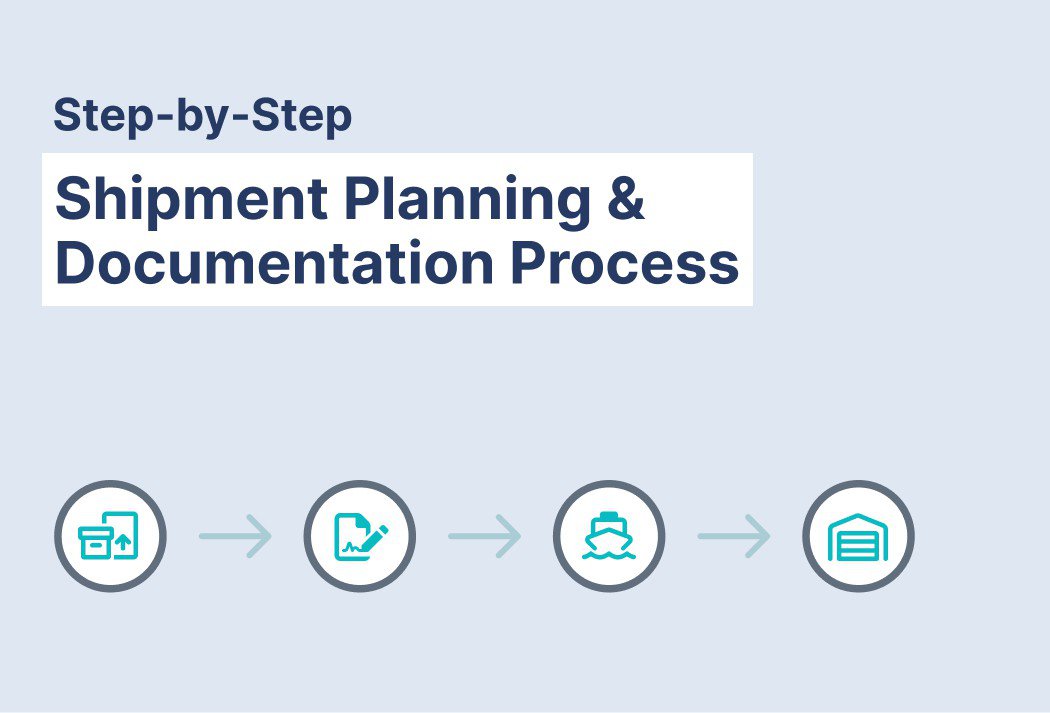
Managing international shipments requires careful planning and strict documentation to ensure smooth cargo movement. Whether you are an exporter or importer, understanding the complete shipment workflow is crucial for avoiding delays, complying with regulations, and optimizing your supply chain.
This guide will walk you through the detailed shipment planning and documentation process, from pre-shipment preparations to final delivery.
Key Stakeholders in Shipment Planning
The shipment process involves multiple stakeholders, each responsible for different aspects of the logistics chain. Exporters and importers must prepare the required documents and ensure compliance with trade laws. Freight forwarders manage transportation, customs clearance, and cargo bookings. Shipping lines and port authorities handle vessel schedules and cargo movement, while customs authorities oversee duties, taxes, and regulatory compliance. Effective coordination between these stakeholders is essential for seamless trade operations.
Choosing the Right Shipping Mode: Ocean vs. Air Freight
Selecting the appropriate shipping mode depends on factors such as cost, urgency, and cargo type. Ocean freight is more cost-effective for bulk shipments but has longer transit times. Air freight is ideal for time-sensitive goods but is significantly more expensive. Additionally, exporters must decide between Full Container Load (FCL) and Less than Container Load (LCL) based on shipment volume and budget constraints. Choosing the right mode impacts overall supply chain efficiency and cost management.
The Role of Incoterms in Shipment Planning
Incoterms (International Commercial Terms) define the responsibilities of buyers and sellers in global trade. They determine who handles shipping costs, insurance, and customs clearance. Commonly used Incoterms include FOB (Free on Board), where the seller is responsible for delivery to the port, and CIF (Cost, Insurance, and Freight), where the seller covers transport and insurance costs. Understanding Incoterms helps avoid misunderstandings and ensures smooth contract execution.
Step-by-Step Shipment Planning Process
1. Pre-Shipment Preparations
Before cargo is transported, exporters must ensure compliance with all necessary documentation and quality standards. This includes:
- Conducting a pre-shipment inspection to verify the quality and condition of goods.
- Packing, labeling, and marking goods as per international shipping regulations.
- Making special disclosures for hazardous or perishable goods, if applicable.
Once the goods are packed and inspected, the exporter works with a freight forwarder or shipping line to proceed with documentation.
2. Freight Booking & Documentation
To ship goods internationally, exporters need to book a freight carrier and obtain necessary shipping documents:
- Delivery Order (DO): Issued by the shipping line or freight forwarder to authorize container pickup.
- Bill of Lading (BL): A crucial shipping document that acts as a receipt and contract for the shipment.
- Certificate of Origin: Required for customs clearance, issued by the Chamber of Commerce.
At this stage, the exporter ensures that all shipping documents are accurate and in compliance with trade regulations.
3. Shipment Processing & Transit
Once the cargo is packed and documentation is complete, the shipment undergoes multiple steps, including customs clearance, transportation, and vessel loading.
| Step | Process Description |
| 1. Goods Inspection & Packing | Goods undergo pre-shipment inspection, quality check, and are packed, labeled, and marked by the exporter or customs agent |
| 2. Special Disclosures |
If goods are hazardous or perishable, the exporter must make necessary disclosures to authorities. |
| 3. Delivery Order Issuance |
The freight forwarder or exporter obtains a Delivery Order from the shipping line for container pickup. |
|
4. Container Loading & Sealing |
Goods are loaded into containers and properly sealed to ensure security during transit. |
|
5. Transportation to Port |
The containers are transported via truck, rail, or trailer to the port of origin. |
| 6. Customs Clearance at Origin | The exporter or customs agent arranges for document verification, customs clearance, and payment of export duties. |
| 7. Carrier Receives Cargo | The shipping carrier receives the cargo, verifies documentation, and issues the Bill of Lading to the exporter or freight forwarder. |
| 8. Port Operations & Loading |
Port workers load the sealed containers onto the vessel for overseas shipment. |
| 9. Shipment Departure & Transit | The vessel departs from the port of origin, and the shipment is tracked in transit. |
| 10. Arrival at Destination Port | The containers arrive at the port of destination and are unloaded. |
| 11. Import Customs Clearance |
The customs agent at the destination files the Bill of Entry, and goods undergo import customs clearance. |
| 12. Import Duty Payment |
The importer pays the necessary customs duties and taxes as per regulations. |
| 13. Carrier Issues Delivery Order |
After customs clearance, the shipping carrier issues the Delivery Order to the importer. |
| 14. Final Delivery & Handover |
The importer or consignee submits the Delivery Order at the container freight station and collects the goods. |
4. Post-Arrival Procedures & Final Delivery
After the shipment arrives at the destination port, the importer must complete several steps before taking delivery:
- The customs agent files the Bill of Entry and the cargo undergoes customs clearance.
- The importer pays customs duties based on the cargo type and country regulations.
- The carrier issues the Delivery Order, allowing the importer to collect goods from the container freight station.
This final step completes the shipment process, ensuring goods are delivered to the intended recipient safely and efficiently.
Final Thoughts
Proper shipment planning and documentation help in reducing delays, avoiding penalties, and ensuring a seamless logistics experience. By following this structured process, exporters and importers can ensure that their shipments comply with international trade regulations and reach their destination without disruptions.
For a hassle-free shipping experience, FreightMango provides seamless digital freight booking, real-time tracking, and expert assistance for all your shipping needs. With AI-driven documentation management, we streamline paperwork, reduce errors, and ensure compliance, making global shipping more efficient than ever.
Looking for an efficient way to manage your shipments? Explore FreightMango’s logistics solutions today!





 Get instant quote
and compare offers in real time
Get instant quote
and compare offers in real time